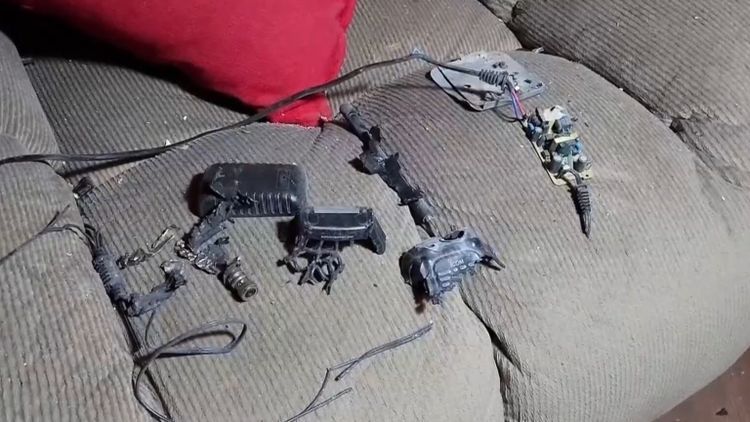Updated on: October 13, 2024 6:16 pm GMT
As tensions surge between Israel and Hezbollah, the conflict that has simmered for decades is escalating into full-scale warfare, marking one of Lebanon’s deadliest days in years. In a series of airstrikes that took place, the Lebanese Health Ministry reports that over 200 people have been killed, and thousands more are injured, raising fears of a broader conflict that could engulf the region.
The Current Conflict: A Major Escalation
The recent bombardment by Israel is a stark reminder of the complex and violent history that has defined Israeli-Hezbollah relations since the early 1980s. Recent reports indicate that the Israeli military’s operations have left at least 182 people dead and 1,645 injured across Lebanon. Officials fear this might be just the beginning of a renewed military confrontation that harkens back to the days of intense warfare over forty years ago.
- Casualties:
– 274 killed in Israel’s attacks
– 1,645 wounded
- Location: Attacks target multiple areas across Lebanon
“Today is one of the bloodiest days we have seen since 2006, with regions that have seldom seen conflict now under siege,” a Lebanese government spokesperson said.
History of Conflict Between Israel and Hezbollah
This ongoing conflict is rooted in a long history of violence and war. Here’s a brief overview:
The Origins of Tension
- 1982 Invasion: Israel launched an invasion of Lebanon, aiming to eliminate the Palestine Liberation Organization (PLO) from its northern neighbor.
- Hezbollah Formation: Following the PLO’s exit, the Iranian-backed Hezbollah emerged in 1985, primarily as a response to Israeli military actions in Lebanon.
- Major Incidents: Initial violent incidents, such as the suicide bombings targeting Israeli military bases in the early 1980s, set the stage for decades of shadow warfare.
Decades of Shadow War
Since the 1980s, incidents of violence have unfolded sporadically:
- 1992 Attacks: Hezbollah retaliated to Israel assassinating its leaders with bombings in Argentina.
- 2006 War: The Second Lebanon War marked another significant escalation, resulting in significant casualties and widespread destruction.
Over the years, Israeli intelligence and Hezbollah have engaged in covert operations across the globe. The conflict has not only been physical but has also extended to intelligence operations worldwide, with notable instances in South America and Europe.
The Present Situation: New Military Strikes
Recently, hostilities have flared up again. Following a series of provocative actions by Hezbollah, Israeli officials indicated a more aggressive military stance. The Israeli military’s tactics, including airstrikes aimed at circumventing Hezbollah’s operational capabilities, have raised alarm in the region.
“Intelligence operations are paramount in this ongoing conflict,” stated David Barnea, the head of Mossad, Israel’s national intelligence agency. He noted that recent successes signal a clear escalation in the clandestine war Israel has long waged against Hezbollah.
Focused Military Operations
Israeli forces have been particularly focused on eliminating high-ranking leaders within Hezbollah. Recent strategic strikes have targeted vital military figures, including:
- Fuad Shukr: Killed in July 2023; a founding member and key military strategist.
- Ibrahim Aqil: Recently killed; known for his significant role in planning Hezbollah’s response strategies.
These assassinations have been recognized as substantial blows to Hezbollah’s operational capacity. Analysts believe that decimating the organization’s leadership weakens its intelligence operations and decision-making abilities.
International Implications
The current conflict has broader implications, particularly concerning foreign relations and security in the region:
- Iran’s Role: Iran’s backing of Hezbollah complicates the situation further. The Islamic Republic has historically supported the group both ideologically and materially.
- US Involvement: The United States has expressed concerns about regional stability and has warned of possible repercussions from escalations in the Israel-Hezbollah and broader Iran-Israel conflict.
International observers caution that a full-blown war could lead to devastating consequences, displacing civilians and destabilizing an already fragile region. Diplomatic channels are under pressure as countries urge both sides to cease hostilities.
What’s Next?
As the situation evolves, analysts remain divided on the potential outcomes. Some argue that Israel’s aggressive strategy could yield short-term successes but risk further inflaming tensions in the long term. Others warn that continued violence could precipitate a wider conflict involving regional powers.
- Predictions:
– Possible further airstrikes by Israel
– Potential Hezbollah retaliatory actions
– Increased instability in neighboring countries
Recent attacks have shown how fragile peace is in the region. This conflict has deep historical roots, making it very complicated. As both sides get ready for what might be a long fight, we need to pay attention to how it affects people and the urgent need for talks to solve the problems. For the thousands of people caught in this situation, we all hope for a quick return to stability and peace.
